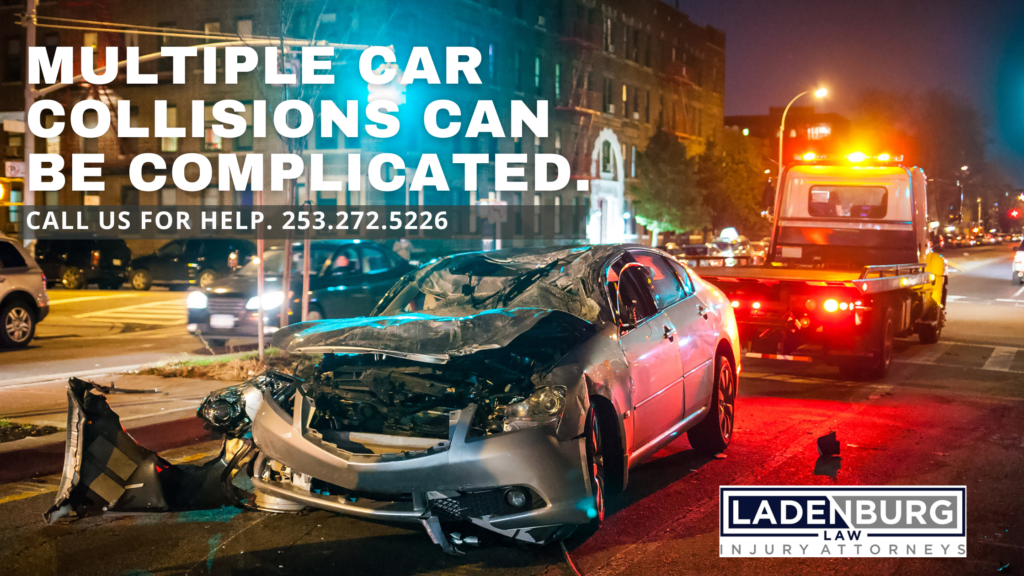Free Case Evaluation
(253) 272-5226Free Case Evaluation
(253) 272-5226Who’s at fault when you’re in a 3-car collision? Contrary to popular belief, it’s not always the driver at back. The causes of multi-car collisions can be complex and trying to figure out who’s to blame (and who will pay for it) isn’t always easy. Thankfully, there are some steps you can take to help determine fault and make sure that your financial interests are protected.
This post will discuss the basics of what you should know if you’ve been in a 3-car collision, including:
Here’s what often happens in a 3-car collision: one car rear-ends another and causes that car to rear-end the car in front of it. Another term to describe this type of crash is a chain-link collision. What could cause a wreck like this?
Some common causes of 3-car collisions include:
Often, there’s more than one reason why a crash happened. For instance, a driver might have been going over the speed limit on a rainy day. He noticed too late the car ahead of him was stopped at a crosswalk. In this scenario, both the speeding and weather played a part. In this same scenario, it’s also clear that the crash was entirely preventable.
You can probably already guess that a wreck with three cars is going to be more complicated than a wreck with two.
Let’s consider some of the reasons why.
With more people involved, it’s also possible to get multiple versions of the accident story. Ultimately, this can make things trickier in knowing who’s to blame.

Often, the driver who collides with a car with enough force to push that car into another car will be responsible for the impacts between all the cars. The reason here is simple. The second collision wouldn’t have happened if the first one hadn’t. If only one driver is found responsible, all victims would be paid from his or her insurance policy. However, this can be problematic if the total cost to treat the victims’ injuries exceeds the policy limit.
That being said, there are circumstances when the middle or front driver may be to blame, at least in part. This is where having witnesses, video surveillance, and crash scene photos can be helpful.
If you feel you are being unfairly assigned blame, you should reach out to a car accident attorney. Depending on the facts, they may be able to help build your case to get your percentage reduced or thrown out entirely.
The most important clue for determining negligence is the police report. In a complex accident scene involving three or more vehicles, it’s important to get a patrol officer to respond and help secure and sort through the scene.
Even so, disputes happen. What then? Thankfully, there are some clues to help determine who is at fault and how much.
Some of these clues include:
A car accident attorney may be able to help. He or she will likely have additional ideas and resources to help strengthen your case.
If you’ve been in a 3-car collision, here are some simple steps you could take:
We’ve hinted a few times already that you may want to consider involving a car accident lawyer on your case. Well, here’s one more reason. There’s no charge to call us and tell us about the 3-car collision you were in. During a free review, we’ll let you know if we can help you or not. If we can, we’ll only charge a fee when we win you a settlement.
In other words, there’s no risk to reach out to see if you could benefit from legal help. Remember, there are likely multiple parties and insurance companies involved. By having a lawyer on your side, you make sure your interests are represented. A lawyer from our Washington State team would be happy to speak with you, so call us today.